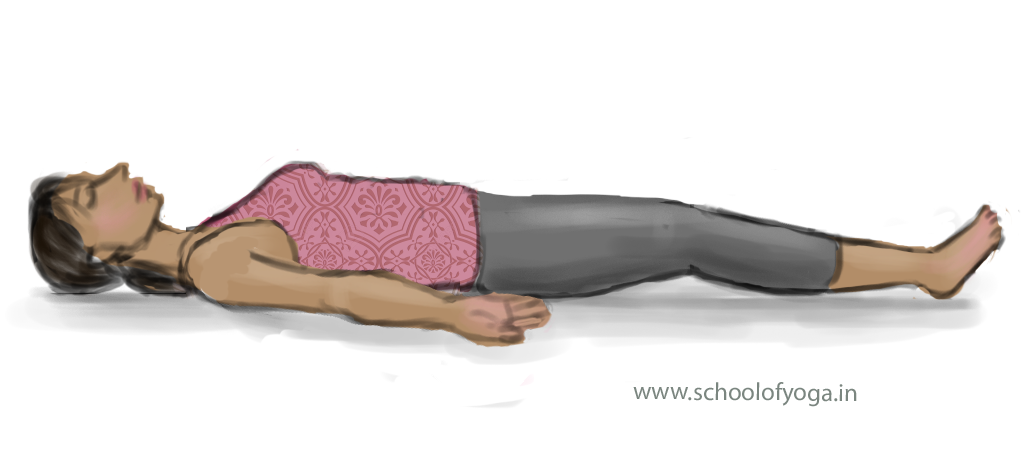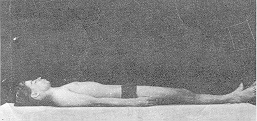School of Yoga explains shavasana (corpse pose)
Shavasana technique:

- Sthithi (starting) position: Lie down on a soft mat, face up. Stretch legs out.
- Keep knees and heels together. Let ankles fall outwards naturally. Let thighs muscles relax and settle outwards.
- Place hands to the sides and let body rest naturally.
- Close eyes partially so as not to fall asleep.
- Breathe without resistance. Inhale and exhale without effort.
- Beginning with feet, start relaxing each element of the body by instructing that part to relax, keep instructin “relax the toe, relax the feet, relax the heel, relax the ankle, relax the calf muscles etc.” until the top of the head.
- The body should feel cool and comfortable.
- Hold this position for 10 minutes. Try not to fall asleep.
- Recover your awareness of yourself.
- Come out of the asana by shaking feet from side to side, then ankles, knees and work up to shoulders and head. This should be done very slowly.
- Finally open the eyes; blink and become conscious of the environment.
- The drishti (gaze) recommended for this asana is nasikagra (tip of the nostril) or brumadhye (middle of the brows).
Shavasana benefits :

- Shavasana is an exercise that brings homeostasis consciously, opening tissues to increase circulation.
- Since resistance to blood supply reduces dramatically, there is an impact on blood pressure and heart rate.
- Shavasana also brings down brain activity while retaining consciousness. This relaxes various parts of the brain, increases blood circulation within, improves various chemical balances and brain functioning.
- The act of relaxing the brain also infuses alpha waves into the brain, increasing calmness and resetting the amygdala with feeling to control.
- As a result of this exercise, the muscles are relaxed after the exertion of performing the other asanas (exercises).
- This should be done about 15 minutes before start of pranayama for maximum benefit of pranayama.
Shavasana contraindications :
- People with psychiatric disorders should not attempt this asana without first consulting a physician.
Some noteworthy points of Shavasana:
Internal Links: Dharma (conditioning), Stress and Situational Awareness, Prana, Asana overview 1, Asana Overview 2, Asana Focus or gazing, Pranayama
External Links: Prana, Chakra, Pancha Tattva, Pancha Prana, Pancha Kosha, Nadi,
Technique: (Please note that this post has an instructional audio on performing Shavasana by Acharya Ram, son of Yogacharya Sundaram) 01 Yoga Nidra